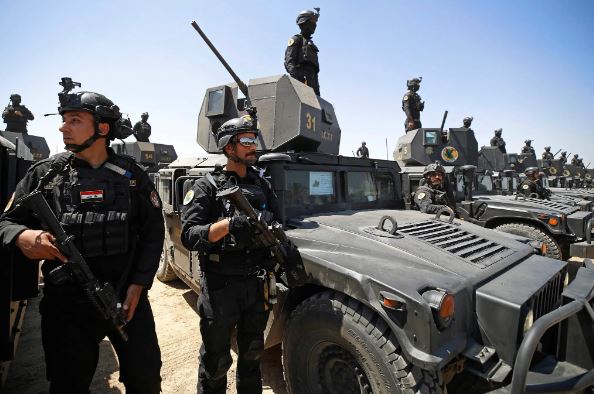In one of the most significant counterterrorism operations against the Islamic State (ISIS) in Iraq in recent years, U.S. military forces announced on Friday that they killed four key ISIS leaders. This operation, which took place on August 29, is seen as a major blow to the group at a time when its attacks have been rising in both Iraq and Syria.
The raid, conducted by American and Iraqi commandos, targeted several ISIS hideouts in western Iraq’s Anbar province. According to a statement from the Pentagon’s Central Command and U.S. counterterrorism officials, at least 14 insurgents were killed, including prominent leaders. The operation was one of the largest in years, and it significantly disrupted the leadership structure of ISIS in Iraq.
Among those killed was Ahmad Hamid al-Ithawi, the top ISIS commander in Iraq and a seasoned veteran of the terrorist group. Al-Ithawi was a central figure in ISIS operations, and his death is seen as a severe setback for the organization. In addition to al-Ithawi, two senior commanders responsible for leading ISIS operations in western Iraq were also killed.
Another major target of the operation was Abu Ali al-Tunisi, a Tunisian national who had a $5 million bounty on his head from the U.S. government. Al-Tunisi was considered ISIS’s top expert in explosives, specializing in improvised explosive devices (IEDs), suicide vests, and car bombs. His role as a teacher and designer of deadly devices made him a high-priority target for U.S. forces.
Counterterrorism experts believe the operation has severely damaged ISIS’s command structure in the Anbar province, a region that has long been a hub for violent Sunni extremists. Charles Lister, director of the Middle East Institute’s Syria and counterterrorism programs, remarked, “The raid appears to have effectively killed off ISIS’s entire command in Anbar.”
The August 29 operation was carried out with more than 200 troops, including elite U.S. Army Rangers who supported the main assault force. The raid took place over miles of remote terrain, with the forces hunting down fighters hiding in bunkers. Seven U.S. soldiers were injured during the mission, highlighting the dangerous and complex nature of the operation.
Despite the raid’s success, the timing of this operation is notable as Iraq’s prime minister, Mohammed Shia al-Sudani, has expressed confidence that the country’s military can control ISIS without U.S.-led assistance. Currently, Iraq and the United States are negotiating a plan to reduce the U.S. military presence in Iraq over the next two years. Currently, there are about 2,500 U.S. troops in Iraq, along with 900 in neighboring Syria.
However, the U.S. Central Command has reported a resurgence of ISIS activity in both Iraq and Syria. In July, the command stated that the number of ISIS attacks was on track to double in 2024 compared to the previous year. In the first six months of 2024, ISIS claimed responsibility for 153 attacks in Iraq and Syria. The command did not provide a breakdown of the figures between the two countries.
The August 29 raid was one of the largest U.S.-led operations in recent memory and featured a significant presence of American commandos. More than 100 U.S. Special Operations forces participated in the helicopter-borne predawn assault, alongside a smaller number of Iraqi soldiers. The raid’s size, scope, and focus reflect the increased threat posed by ISIS in recent months.
In a statement, Central Command emphasized that the raids were designed to “disrupt and degrade ISIS’s ability to plan, organize, and conduct attacks against Iraqi civilians, U.S. citizens, allies, and partners throughout the region and beyond.”
In addition to killing insurgents, the operation also yielded valuable intelligence. American and Iraqi forces recovered cellphones, computers, and other data sources from the raid sites. U.S. analysts are now assessing the information to determine if it can lead to further operations against high-priority ISIS targets. Over the coming months, counterterrorism analysts will continue to analyze the data to gain insights into the group’s leadership, finances, and operations.
This operation is one of many carried out in recent months. Since October, U.S. and allied forces have supported Iraqi troops in over 250 counterterrorism missions, according to Pentagon officials. This mission, however, stands out due to the number of senior ISIS leaders killed and the heavy involvement of U.S. Special Operations forces in the initial raid.
As ISIS continues to regroup and attempt to expand its operations, counterterrorism efforts like this one are seen as crucial in containing the group’s influence in Iraq and Syria.

